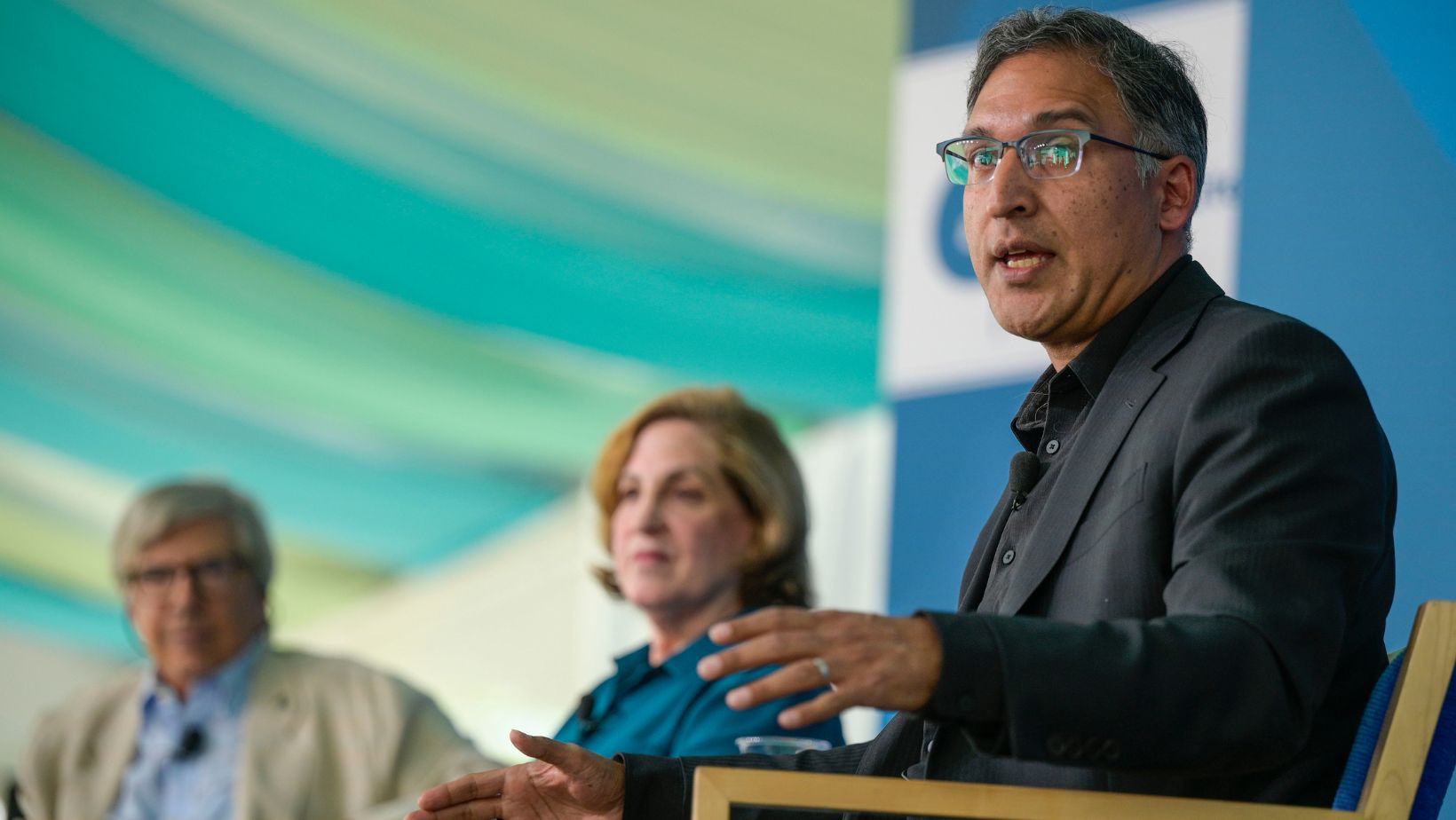Recently, Aspen Institute President and CEO, Walter Isaacson, welcomed over 160 Society of Fellows members to kick off the Institute‘s summer programming. In celebration of the 50-year anniversary of the SOF, Isaacson thanked Fellows for their contributions, assured them that the Institute is currently in a “strong” state, and then launched into a discussion of the power of collaborative creativity, a topic of his recent research.
“Innovation occurs when you’re able to connect things,” said Isaacson, offering insights he gathered from writing The Innovators, his latest book, which comes out in October. Highlighting the benefits of understanding the arts, sciences, and humanities as partners, he also emphasized the importance of teamwork, stating that behind every invention is not an individual, but a collaborative group, that made it happen. Isaacson suggested that the cumulative strength of both humans and machines makes for a powerful duo. He alluded to the ideas of Ada Lovelace, Alan Turing, and Steve Jobs who harnessed the potential of technology over the past two centuries. Isaacson highlighted Lovelace as a particular case of someone who paired her expertise in math and love for poetry in an approach she coined “poetical science” to become the world’s first computer programmer in the 1830s. She gave us the notion of weaving patterns, Isaacson explained.
Isaacson called the relationship between humans and machines a symbiotic one, where humans need to provide the thinking power behind the machine’s processing power. He encouraged Fellows to remain optimistic about the unique abilities of humans and what they bring to innovation: “We have to bring what we do best – imagination.” He continued to say that it is the combination of humans and computers that far outmatches just humans or computers alone. Isaacson claims this partnership is the way of the future even though the accessibility of understanding technology is increasingly difficult today in comparison to the past. He reminisced about deconstructing his radio to see how it worked when he was a child, and commented that it would be nearly impossible to do with today’s iPad. “We need technology to be hands-on again,” stated Isaacson.
Isaacson finished his talk by telling Fellows that much of his inspiration came from the Aspen Institute campus, as it is a model for merging seemingly separate disciplines in one place. It is a place to spur creativity and break down the divide between arts, sciences, and humanities, on a campus that hosts the Benedict Music Tent, the Aspen Center for Physics, and a number of seminar rooms. Isaacson referred to Steve Jobs as someone whose genius emerged at the intersection of liberal arts and technology, and challenged Fellows to pursue these valuable connections. “We have to all overcome the two cultures (i.e., humanities vs. sciences)…this town made me understand all that.”
Fellows enjoyed drinks, hors d’oeuvres, and meeting up with new and old friends throughout the evening. Peter Waanders, SOF Director, and Bob Steel, Chairman of the Aspen Institute Board of Trustees, addressed Fellows before presenting Isaacson to speak for the night. The reception was the first event for Society of Fellows members to come together this summer.

